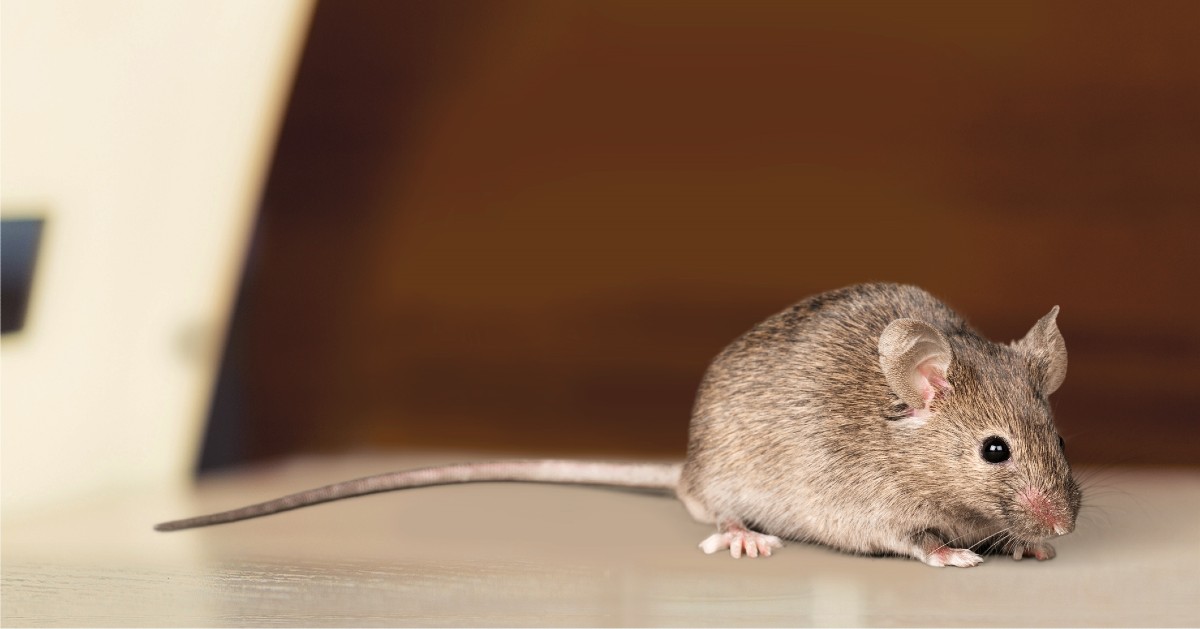And What to Do About an Infestation
Some famous mice might be beloved on the big screen, but finding mice in your home isn’t a heartwarming experience. If you’re a property owner in The Golden State, you may have had a run-in with California mice. If you’ve been spared until now, don’t let your limited knowledge of these critters put you at a disadvantage when it comes to a pest problem. Here’s what you need to know about California mice and how to seek help in getting rid of a potential infestation.
All About the Mouse
The California mouse, properly known as Peromyscus californicus, is found in central to southern California and northwestern Mexico. This small creature grows up to 11 inches in length, most of which is the tail which can be 6 inches alone. It has large ears in comparison to its head and body and appears overall brown in color with some black hairs peppered in while their underside is cream colored and extremities are white.
These rodents can live 12-18 months and litter typically consists of two pups but a pair can produce up to six litters in a year. They seek secluded places to nest such as under debris like stacked wood, boxes in storage, or other places that are well-covered. They use dry materials such as grass, sticks, filling, paper, and the like to build their nests which they actively defend and occupy. California mice are most active at night with short bursts of activity during daylight.
Like many other species of mice, California mice feed on fruits, seeds, flowers, fungi, and more in the wild, however in your home they gravitate toward sweets, cereals, and seeds. Since mice eat up to 20 times a day, it’s likely that you’ll quickly be able to discover if they’ve been in your pantry or cabinets. But how do mice get into your home?
Securing Your Home
These persistent and sneaky critters seek out warm places to nest, feed, and breed which makes your home the perfect place for them to settle. As they’re most active at night, they can pretty easily set up camp without being detected. California mice, like many other types, can get into your home through very tiny cracks. Spots like the area surrounding a utility pipe is big enough for a mouse to gain access to your basement, attic, or walls. Sealing these spaces with silicone caulk on the outside can help to prevent pests from gaining access while filling interior holes with steel wool can help stop them from nesting. However, these measures aren’t fool-proof and you may find yourself with a rodent problem.
Signs of an Infestation
Since California mice are on the smaller side and because they’re so good at staying out of sight, it might take a while for you to realize you have a pest problem. Here are some common signs of infestation that you might see:
- Droppings – FInding mouse excrement is one of the tell-tale signs of an infestation. These tiny little pellets can be found in food storage spaces, under appliances, along baseboards, and more.
- Teeth Marks or Open Food – Mice chew through a variety of materials including boxes, plastic, and even pipes in order to secure food and water. They can also do significant damage to your home by chewing through wires in your walls which increases the risk of fire. If you see teeth marks or find food containers that have been chewed into, you definitely have an infestation.
- Noises – Hearing things scurrying around in the walls? It’s probably not your imagination. Mice move throughout your home in ways that allow them to remain undetected, which is typically through the walls. They love attics and tend to build nests there but have to scavenge for food throughout the home and walls are a perfect way to get around.
If you’ve noticed any of these calling cards of California mice, you need to take action immediately to manage your rodent infestation.
How to Handle an Infestation
While you can take steps on your own to both prevent and remedy an infestation of California mice, it’s best to call in the professionals to help. Some things you can do right away if you find signs of a rodent problem are:
- Block apparent holes – Do a quick survey of your home and block any holes or cracks that you think mice might’ve used to gain entry.
- Deep clean – Since mice are known to spread diseases, be sure to do a deep clean of your home and especially any area you may have found signs of rodent activity.
- Call us – Make the call to get professionals involved. While you can do some things to immediately help the situation, professionals have a targeted plan to help rid your home of rodents and other pests.
Our team will work with you to assess the problem, remedy the situation, and put preventative measures in place so that you’re more likely to avoid another infestation. Contact us today to find out more.
Why Are There Mice in My California Home’s Attic Professional Pest Control Services in Tracy CA?
Serving Northern California

